Understanding Opioid Addiction
Learn About Opioid Abuse & Addiction
Opioids are a type of drug that have both legal and illicit uses. Natural opioids come from the opium poppy plant, while synthetic opioids are created in labs. In controlled settings, opioids are powerful analgesics, or painkillers. When used recreationally, however, opioids reduce pain, cause sedation, and bring about feelings of euphoria. Morphine, oxycodone, hydrocodone, and codeine are all opioids that are commonly prescribed to treat pain, while heroin is an illegal opioid.
All opioids, even those legally prescribed, have the potential for abuse should they be used at high doses or for a long period of time. Opioids are so powerful because they activate built-in painkilling and reward circuits in the brain. They mimic brain chemicals that are associated with pleasurable feelings and pain reduction. With continued use, a person’s craving for the pleasurable feelings brought on by opioids can begin to take over his or her life. Thankfully, help is available for those with an opiates addiction at Keystone Treatment Center.
Statistics
Statistics for Opioid Abuse
Within the last year, two million Americans have used opioids, and ten times that many have used opioids at some point in their lives. The National Institute on Drug Abuse (NIDA) reported that 52 million people in the U.S. have experimented with prescription painkillers. About one-fifth of those who use opioids choose to use heroin, and, unfortunately, about 25 percent of those who use heroin will become addicted.
Causes & Risks
Causes & Risk Factors of Opioid Addiction
Understanding the reasons for an individual person’s opioid addiction is not simple, though researchers agree that both genetic and environmental factors work together to determine a person’s risk. The following are some common causes and risk factors for an opioid use disorder:
Genetic: A fairly robust body of research suggests that genetics and heredity influence a person’s chance of developing an opioid addiction. Studies on families, adopted children, and twins suggest that genes play a role in determining someone’s risk for developing a substance use disorder. The risk of developing a substance use disorder increases threefold when one’s parents or siblings have substance use disorders.
Environmental: Not all people who are genetically vulnerable to an opioid addiction actually develop one. As such, a person’s environment also plays a role. Children who experience abuse or neglect, as well as those who grow up in homes with family members who abuse drugs, are more likely to abuse drugs themselves. In addition, exposure to severe chronic stress, such as poverty, unemployment, violence, or abuse, can increase a person’s risk of turning to opioids. Unfortunately, being prescribed opioids for chronic pain or a severe injury can also increase a person’s risk of abusing them.
Risk Factors:
- Family history of substance use disorder(s) or mental illness(es)
- Personal history of substance use disorder(s) or mental illness(es)
- Having an accident, injury, surgery, or other medical issue requiring a prescription for opioid painkillers
- Exposure to poverty or experiencing chronic unemployment
- Personal history of trauma or victimization
- Poor stress management skills
- Having friends or loved ones who use opioids
Signs and Symptoms
Signs & Symptoms of Opioid Addiction
Although each person’s struggle with opioid abuse manifests differently depending on the length and extent of abuse, there are a few common signs and symptoms found in those with an opioid use disorder:
Behavioral symptoms:
- Lying about one’s whereabouts and activities
- Stealing money or medications from others
- Meeting with multiple doctors to obtain multiple prescriptions for opioids
- Inconsistent pain-related behavior, such as using a cane to walk when others are around but walking normally when thinking he or she is alone
- Decline in work performance; absenteeism
- Isolating oneself from family and friends
- Unexplained periods of absence
- Angry emotional outbursts
Physical symptoms:
- Changes in personal appearance, such as poor hygiene or weight changes
- Slowed reflexes
- Poor motor coordination
- Alternating between constipation and diarrhea
- Scabs, sores, or puncture wounds suggestive of IV drug use
Cognitive symptoms:
- Impaired judgment and problem-solving
- Paranoia
- Difficulty concentrating
- Difficulty making decisions
- Feeling detached from one’s surroundings
- Learning difficulties
Psychosocial symptoms:
- Sudden, unprovoked outbursts of emotion
- Irritability
- Anxiety
- Depression
- Wildly fluctuating mood
Effects
Effects of Opioid Abuse
If left untreated, an opioid use disorder can have tragic consequences, including:
- Poor performance at work
- Job loss
- Financial difficulties
- Relational strife or divorce
- Loss of child custody
- Homelessness
- Contracting infections, such as HIV, from sharing needles
- Physical ailments, including breathing problems, collapsed veins, cardiovascular problems, and sexual dysfunction
- Overdose, coma, or death
Co-Occurring Disorders
Opioid Addiction and Co-Occurring Disorders
People who feel the need to use opioids often have other stressors and difficulties in their lives. These stressors and difficulties often stem from the presence of an existing mental health condition or conditions, including:
- Post-traumatic stress disorder
- Depressive disorders
- Anxiety disorders
- Obsessive-compulsive disorder
- Schizophrenia
- Attention-deficit/hyperactivity disorder
- Personality disorders
Withdrawal & Overdose Effects
Effects & Symptoms of Withdrawal from Opioid
Effects of opioid withdrawal: If a person uses opioids long enough to develop a dependence and then discontinues use of the drugs, a painful and potentially dangerous process called withdrawal can occur. Withdrawal is the body’s attempt to readjust to functioning without the presence of opioids and can include the following:
- Digestive problems, such as vomiting and diarrhea
- Muscle spasms
- Abdominal cramping
- Powerful cravings for more opioids
- Loss of appetite
- Agitation
- Anxiety
- Insomnia
Effects of overdose: A situation where a person has taken more of a drug than his or her body can metabolize is known as an overdose. Dangerous and potentially fatal, overdoses should be treated seriously. If you or someone you know is experiencing any of the following symptoms, seek medical attention immediately. Possible symptoms of opioid overdose include:
- Pinpoint pupils
- Cardiopulmonary problems, including slowed heartbeat and shallow, slow respiration
- Loss of color or bluish color in skin, lips, and fingertips
- Delayed responses to stimuli
- Seizure
- Muscle spasms
- Decreased alertness
- Loss of consciousness
- Coma
- Death











